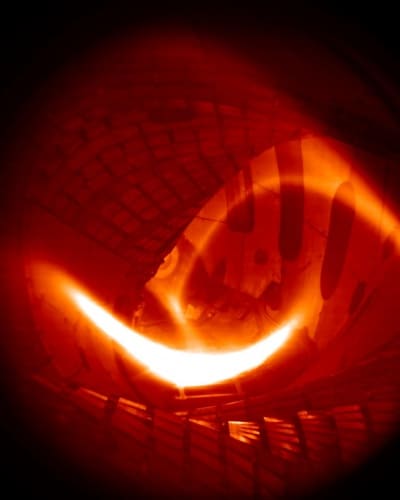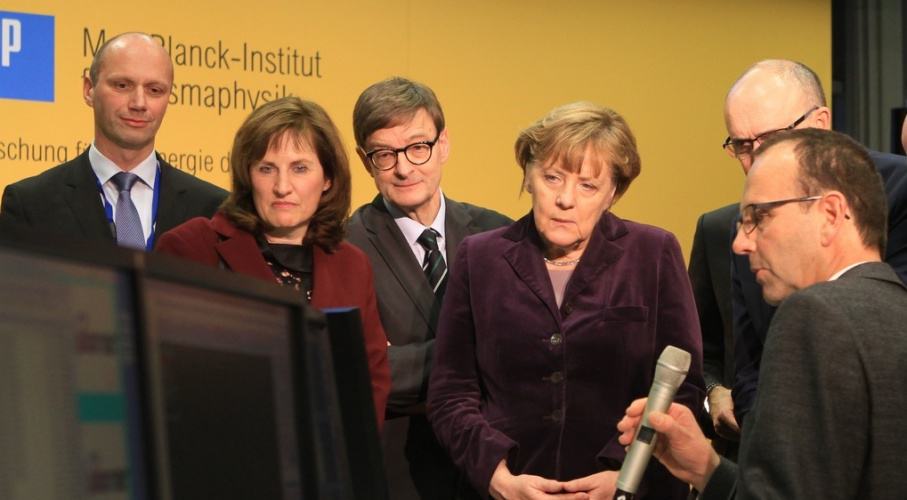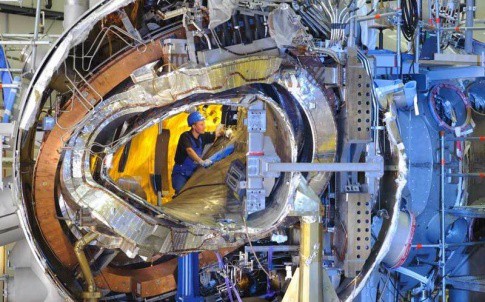
The Wendelstein 7-X experimental nuclear fusion device has passed a major milestone in its development with the generation of its first hydrogen plasma. W 7-X, at the Max Planck Institute for Plasma Physics (IPP) in Griefswald, Northeastern Germany, is a stellarator: a reactor shaped like a twisted doughnut, which confines the plasma in which fusion takes place within magnetic fields with a complex geometry.
W 7-X was completed last year, as The Engineer reported in our December on-line issue. Since then, its operators have performed 300 pulses inside the reactor with a plasma made from helium. These served to clean the inside of the vacuum chamber, which allowed the plasma temperature to be increased; it eventually reached 6million degrees Celsius. During this phase, the IPP team also tested W 7-X’s instruments, including X-ray spectrometers, interferometers, laser scattering and video diagnostics. “This makes everything ready for the next step,” commented project head Prof Thomas Klinger, “We are changing from helium to hydrogen plasmas, our proper subject of investigation.”
The first hydrogen plasma pulse was activated in a ceremony by Chancellor Angela Merkel. This pulse, lasting a quarter of a second, used 2MW of microwave heating to send the plasma temperature up to 80million degrees Celsius. “The device’s first hydrogen plasma has completely lived up to our expectations”, states Dr. Hans-Stephan Bosch, whose division is responsible for operation of Wendelstein 7-X.

This phase of operation, with brief pulses, will last until mid-March, when the vessel will be opened to install carbon tiles on the plasma-facing inner wall and a diverter – a feature for removing the products of fusion. After this, the duration of plasma pulses and heating power will be gradually increased over the next four years, with the addition of further equipment inside the stellarator at intervals, until it can reach an eventual target of 20MW of heating in half-hour pulses. At this point, fusion experimentation with a plasma of two isotopes of hydrogen, deuterium and tritium, can begin.

Stellarators use a similar mechanism to a more common types of fusion reactor, the tokomak, with the charged plasma confined inside a toroidal vacuum chamber by powerful electromagnets. But while tokamaks are flat toroids – that is, the centerline is a planar circle – the centerline of a stellarator is twisted in a helical shape. While tokamaks need to induce a current in the plasma to help heat it, stellarators need no plasma current: this makes the plasma inherently more stable and theoretically allows them to operate continuously, whereas tokomaks can only operate in pulses. But the magnets in a stellator, and the fields they create, require very powerful supercomputers to calculate their geometry, so they were impossible to build at scale until relatively recently. W 7-X, like the tokamak experiment ITER being built in southern France, uses superconducting magnets and is intended to demonstrate whether it could be used to generate more energy than it takes to operate, and therefore whether it could be a future source of electricity.




Red Bull makes hydrogen fuel cell play with AVL
Formula 1 is an anachronistic anomaly where its only cutting edge is in engine development. The rules prohibit any real innovation and there would be...